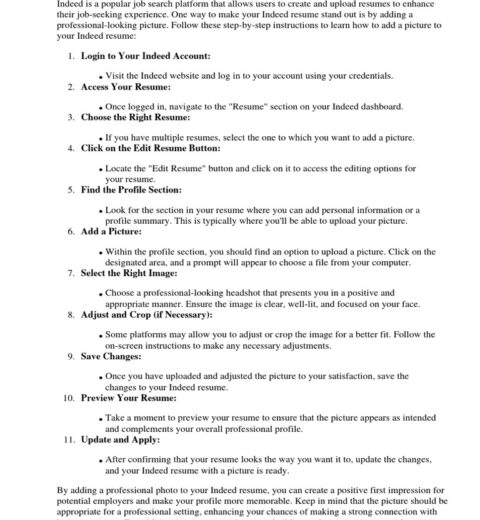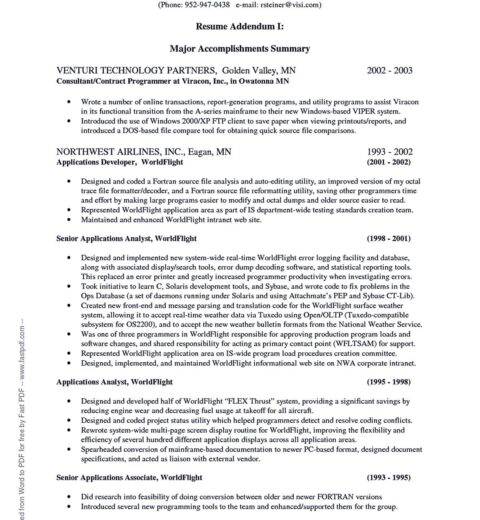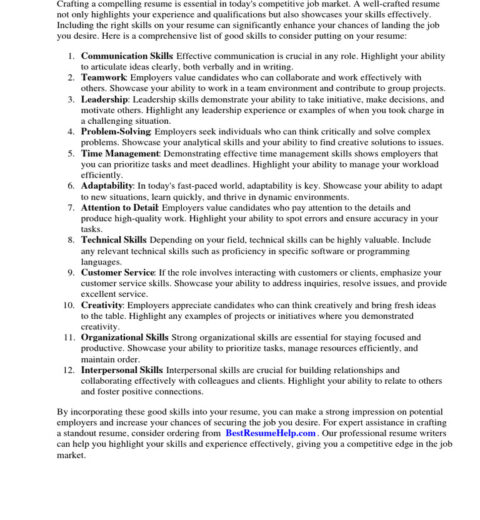Crafting a standout resume can seem like a Herculean task, particularly in a competitive job market. Have you ever glanced at your blank screen and felt an overwhelming wave of frustration? What if your resume could be the key to unlocking an array of exciting job opportunities? It’s more than just a document; it’s a personal marketing tool that encapsulates your skills, experiences, and professional narrative. As daunting as it may seem, understanding how to write a good resume requires knowledge and strategy. Let’s delve into the essential elements.
To begin with, let’s address the foundational purpose of a resume. Its primary function is to provide a succinct and compelling overview of your qualifications, tailored to entice potential employers. The ultimate goal? To secure an interview that paves the way for a potential job offer. Therefore, the writing process needs to be meticulous, intentional, and strategic.
1. Understand the Different Types of Resumes
Before you start drafting, it’s vital to grasp the various types of resumes available. These include chronological, functional, and combination formats. Each serves a different purpose:
- Chronological Resume: This format lists your work history in reverse chronological order, showcasing your most recent experiences first. It’s ideal for candidates with a solid work history in the field they’re pursuing.
- Functional Resume: This format emphasizes skills and experiences instead of a timeline, making it suitable for those with gaps in employment or who are changing careers.
- Combination Resume: This hybrid format allows you to highlight both relevant skills and a chronological work history, offering flexibility and clarity.
Choosing the right format is the first step to creating an effective resume that aligns with your career objectives.
2. Tailor Your Resume to the Job
One of the pivotal missteps candidates often make is using a one-size-fits-all resume. Instead of adopting a generic approach, customize your resume for each application. Carefully scrutinize the job description and discern the qualifications, skills, and experiences the employer values. Integrate keywords from the listing directly into your resume. This not only showcases your compatibility with the position but also aligns your document with applicant tracking systems (ATS) that many companies utilize to filter resumes.
3. Craft a Compelling Summary Statement
Your resume should begin with a summary statement that encapsulates your professional identity. This is a powerful opportunity to introduce who you are, what you bring to the table, and what your aspirations are. The summary should be concise—ideally, no more than three to four lines—yet robust enough to compel the reader to continue. For example: “Dynamic marketing professional with over five years of experience in digital campaigns, adept at leveraging analytics to drive strategic decision-making and enhance customer engagement.” This approach immediately delineates your expertise and sets a positive tone.
4. Highlight Relevant Skills
Employers seek candidates who possess the necessary skills to thrive in the role. Your resume should therefore reflect both hard and soft skills. Hard skills might include technical proficiencies relevant to the job, such as software expertise or language fluency, while soft skills encompass interpersonal abilities like communication, leadership, and teamwork. The balance of these two types of skills creates a well-rounded candidate profile.
5. Detail Your Work Experience
When detailing your work experience, be specific. Instead of simply listing your duties, emphasize accomplishments using quantifiable results. For instance, rather than stating, “Managed a team,” consider a more impactful phrasing: “Led a team of five to successfully execute a project that increased operational efficiency by 30%.” Such details not only illustrate your responsibilities but also demonstrate your effectiveness and value to potential employers.
6. Include Education and Certifications
Education is a fundamental component of your resume, particularly for recent graduates or individuals in fields where credentials are paramount. Include your degree(s), institutions, and graduation dates. If you’ve obtained relevant certifications, include them as well. These serve as badges of your expertise and commitment to professional development.
7. Maintain Professional Formatting
Presentation matters. A well-structured resume is easy to read and visually appealing. Stick to a clean, professional font—avoid anything overly stylized. Utilize clear section headings, bullet points for lists, and consistent formatting for dates and job titles. A resume that’s aesthetically pleasing not only reflects professionalism but also makes information consumption easier for hiring managers.
8. Proofread and Edit
No one wants to be remembered for a typo. After drafting your resume, take the time to proofread meticulously. Watch for grammatical errors, misspelled words, and inconsistent formatting. It may also benefit you to have a trusted peer review your document. Fresh eyes often catch mistakes you may overlook.
9. Keep It Concise
Finally, consider the length of your resume. Ideally, it should span one page, especially for those with less than ten years of experience. If your career is more extensive, a two-page resume may be acceptable, but ensure every word serves a purpose.
In conclusion, writing a compelling resume is a key component of the job application process. It necessitates thoughtful consideration and a deep understanding of how to effectively showcase your professional journey. As you embark on creating your resume, remember: it’s not merely a summary of your career but an invitation for potential employers to engage with you further. Each element you incorporate has the power to influence their decision. So, embrace the challenge, and transform your resume into a formidable tool that propels you toward success.




